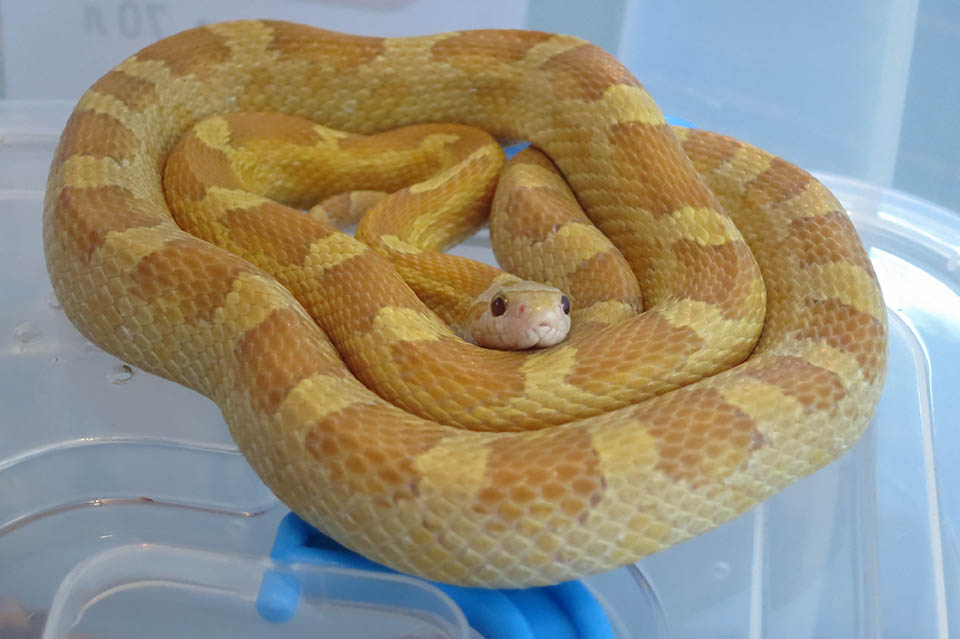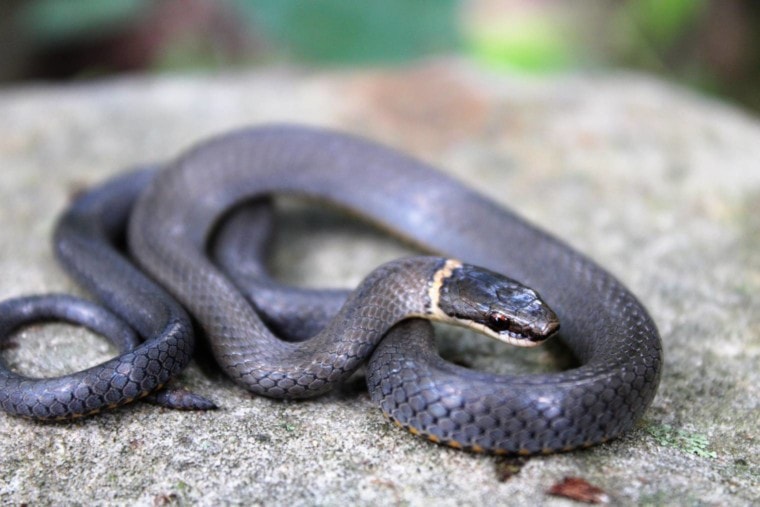
Snakes are kept as pets by millions of people around the world and there are thousands of different species, including many that are venomous and even some that can reach speeds of more than 10 miles per hour. Whether you are considering taking one on as a pet or are simply intrigued by this often-misunderstood animal, we have included 20 incredible facts about this reptile.
The 20 Facts About Snakes
1. There Are More Than 3,000 Species Of Snakes
Snakes are found in almost all countries of the world, including some areas that we might consider otherwise inhospitable, and they have adapted to live in these areas. Although most require heat from the sun because they do not produce their own heat, some live in surprisingly cold climates, too. In fact, there are known to be around 3,700 distinct species around the world, as well as multiple variants of some of these species, covering every color and most physical attributes.

2. Snakes Can Grow To 6 Metres Long
The reticulated python is native to parts of Asia and can boast of being the longest snake species in the world. They grow to an average length of over 6 meters, with some achieving a total length of 7 meters or more. As a python, the species is non-venomous. It is a constrictor, which means that it crushes its prey to death. As well as being the longest species, the reticulated python is also among the three heaviest species in the world so it is a formidable creature.
3. They Need Heat To Survive
Often described as being cold-blooded, snakes are, in fact, ectothermic. This means that they are unable to produce their own heat and they have to rely on environmental factors and their surroundings to warm themselves up. In the wild, they would use the heat of the sun to warm up and can be found in sunny spots and on hot rocks. In captivity, they need heat lamps, heat maps, and basking spots to ensure that they can reliably thermoregulate and achieve their desired temperature.

4. They Smell With Their Tongue
Snakes don’t have noses, but they can still smell. This is because they use their tongues to gather particles in the air and then deliver these to sensory glands at the top of their mouth. These openings are called Jacobson’s organs and this is the reason that you see snakes lapping at the air: they are testing their surroundings and looking for anything in the vicinity that might be either prey or predator.
5. They Have No Eyelids
As well as having no noses, snakes do not have eyelids. Instead, they have a very thin film called brille that covers the eyeballs and protects them from damage, ensuring that they can see. This ocular scale is what gives snakes a glassy-eyed look.

6. Snakes Cannot Chew
If you’ve been bitten by a snake, you will likely know that they do have teeth, as well as fangs. However, while the fangs are designed to deliver venom and the teeth can be used for a multitude of purposes, they are not capable of chewing. Because snakes cannot chew, they swallow their food whole. This is the reason that you can often see a snake’s last meal as a bulge further down the animal. It can take as long as 5 days for food to be digested once in the body, although the warmer the snake, the quicker the food fully digests.
7. Not All Snakes Lay Eggs
Snakes are known for laying eggs but, in actual fact, not all species externally lay at all. Some species are ovoviviparous, which means that they lay and hatch the eggs internally. Only once the eggs hatch inside do the young snakes emerge from the mother. There is no umbilical cord and no placenta, and when the young do emerge, they eat the egg sac to get the nutrients that they require. Stingrays and some sharks give birth in the same way but it is still considered unusual.

8. They Only Eat Meat
Snakes are obligate carnivores, which means that they only eat meat. The only non-meat in their diet comes from the stomachs of their prey and accounts for very little of their diet. If you are considering owning a snake, remember that you must feed them meat and some snakes require that you warm their food up before feeding to stimulate the predator senses. The actual meat consumed by a snake varies according to species and food availability but can include mice, rats, and other rodents; insects; and even some lizards and smaller snakes.
9. Snakes Have Hundreds Of Ribs
Humans typically have 24 ribs and these are meant to protect the organs from harm. Snakes have ribs for the same reason, but rather than being limited to only 24, they have hundreds of these protective bones. They can have between 200 and 400 ribs running the entire length of their body, which matches the number of vertebrae they have.
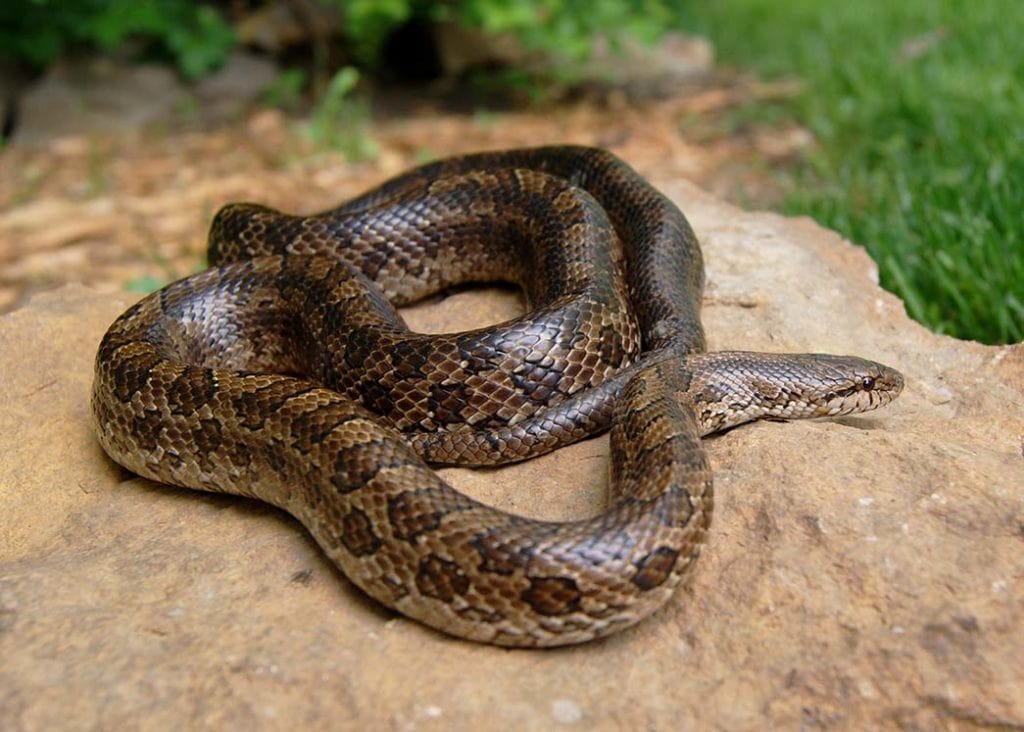
10. They Can Sense Heat
Snakes have infrared detection which means that they can “see” the heat of their prey in a similar way to how we see colors and patterns. Specifically, vipers, pythons, and boas, use a pit organ that is located on their faces to be able to detect heat in this way. This not only makes it easier to spot prey in the open, but it means that some snakes can see mice and other animals as they attempt to hide in bushes, grass, or other camouflaged spots.
11. They Can Steal Heat
Some snakes, especially garter snakes, use a method of thermoregulation known as kleptothermy. The snake uses some means of getting close to another snake and then stealing the heat from its body. This is not reciprocated, which means that the victim’s body gets colder as the warmth is passed to the heat stealing snake. Through kleptothermy, snakes can maintain a suitable high body temperature and can supplement the heat from the sun’s rays when it is overcast, cloudy, or when the air temperature is simply too cold.

12. Some Can Survive Years Without Food
Although it is rare, some snakes can lower their metabolism to such a low rate that they can survive more than a year without eating. Although it is rare for a snake to have to go so long without food, the ball python does so quite regularly so that it can go without food for as long as 6 months. During this time, they use energy conserved by the body while also using less energy than when food is readily available or after they have just eaten.
13. Hissing Is A Form Of Defense
Snakes hiss as a means of warning predators to back off. They breathe through the glottis in their throat and while this is normally silent, they can force more air through at once, which causes that hissing noise. It is used as a defensive tactic and is most often used by small snakes that have less defense than the larger snake species. However, some hissing snakes can be venomous, so if you hear the sound it is better to back away to safety than to hang around and find out.
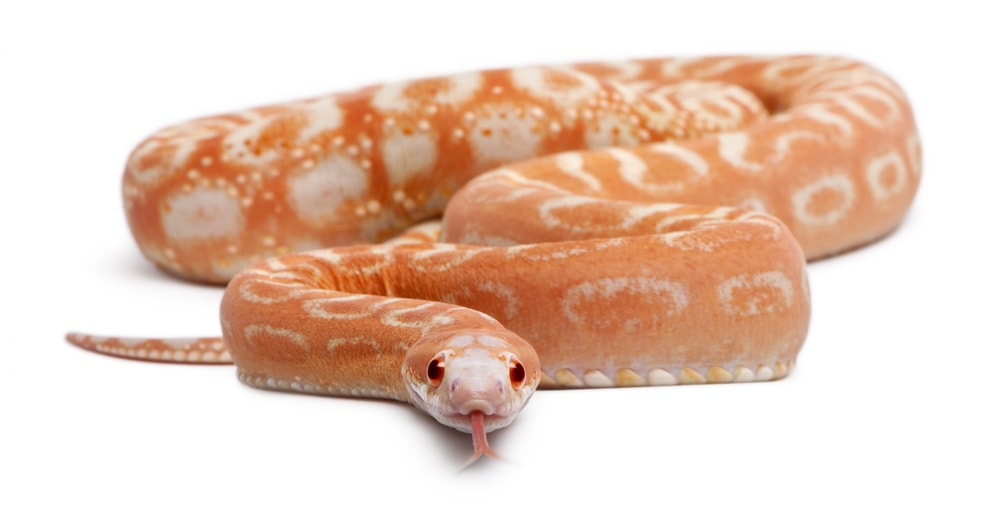
14. They Are Venomous But Rarely Poisonous
While many snakes are venomous and potentially dangerous to humans, there are very few poisonous species of snake. Poisonous actually refers to something that is ingested while venomous means that the toxic is injected under the skin and into the body. Although most snakes do have some form of venom, the majority are described as being clinically non-venomous. This means that while the snake might have venom, it is not considered dangerous to humans. This group includes the likes of the hognose snake: it is not dangerous to humans but produces a venom that does cause harm to its prey.
15. Babies Hunt Almost Straight Away
When born or hatched, baby snakes will undergo a period where they do not need to eat. This can last approximately a week or so, but once the babies are ready to eat they will hunt their own food. The hunting instinct is a basal instinct, which means that even babies are perfectly equipped and capable of bringing down prey.

16. The Black Mamba Is One Of The Most Deadly Species
Anti-venoms and education have helped greatly reduce the number of deaths that occur as a direct result of a snakebite. However, some snake deaths do still occur every year, and one snake that sits at the top of the pile when it comes to being deadly to humans is the Black Mamba. In fact, this snake effectively has a 100% fatality rate in humans, so if you see one, you should treat it with absolute respect and stay out of the way to avoid coming to any harm.
17. Species Are Not Venomous To One Another
There are many venomous snakes, including those that attack and incapacitate other snakes. However, snakes are immune to the venom of other snakes of the same species. Presumably, this is to keep species deaths down to a minimum and ensure their survival.

18. Spitting Cobras Go For The Eyes
Spitting cobras are so-called because of their ability to eject venom. They typically go for the eyes of their victims, rendering them unable to see and prevent an attack. The venom may cause blistering on intact human skin, but is otherwise harmless. However, if it does get in the eyes, it can cause blindness. Although it is described as spitting and gives the snake its name, the snake does not spit its venom. Instead, it squirts venom out of glands near the tips of its fangs. The spitting cobra can also deliver venom by biting.
19. Some Can Reach Speeds Of 12 Miles Per Hour
As well as being incredibly deadly, the Black Mamba is also one of the fastest land snakes, reaching speeds of 12 miles per hour or slightly more. This combination of speed and ferocious venom has made them one of the most feared snake species in the world. Another reason to fear this snake is that, unlike most snakes that will look for cover or escape when they feel threatened by humans, the Black Mamba will aggressively attack as its best form of defense.
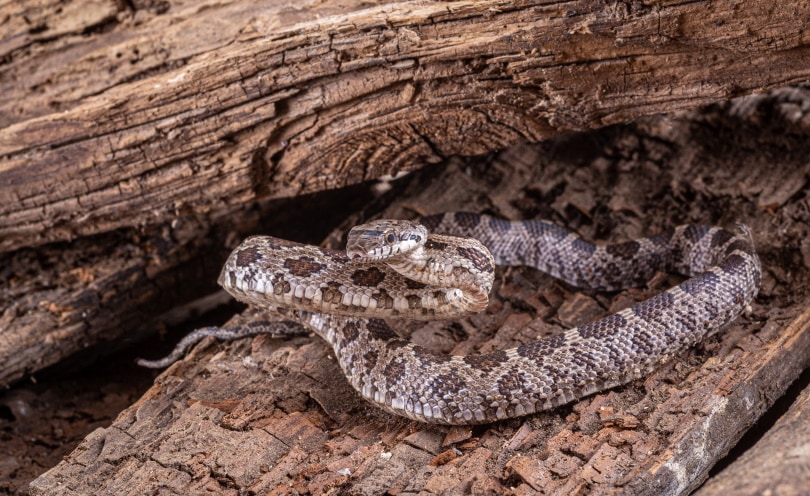
20. More Than A Million People Own Pet Snakes
Although they are not as common as cats, dogs, and rabbits, the number of people that keep a snake as a pet is a surprisingly high figure. It is estimated that more than a million people around the world own at least one of these reptiles and keep it in their homes. While they might not be cuddly or loving, they are intriguing and they don’t need daily exercise like a dog. In fact, some only need feeding every week or two and can keep their enclosure in relatively pristine condition. They are certainly not for everyone, but snakes can make good pets.
 Facts About Snakes
Facts About Snakes
Snakes are found all around the world and can make intriguing and enjoyable pets, although they are not cuddly or affectionate. With several thousand species, many of which are venomous, they are a deeply interesting group of animals.
Related Topic:
- How to Get Rid of Snake Odor (4 Tips & Tricks!)
- 16 Australian Snakebite Statistics to Know: Rates, Deaths & More
Featured Image Credit: Heptinstall, Shutterstock

